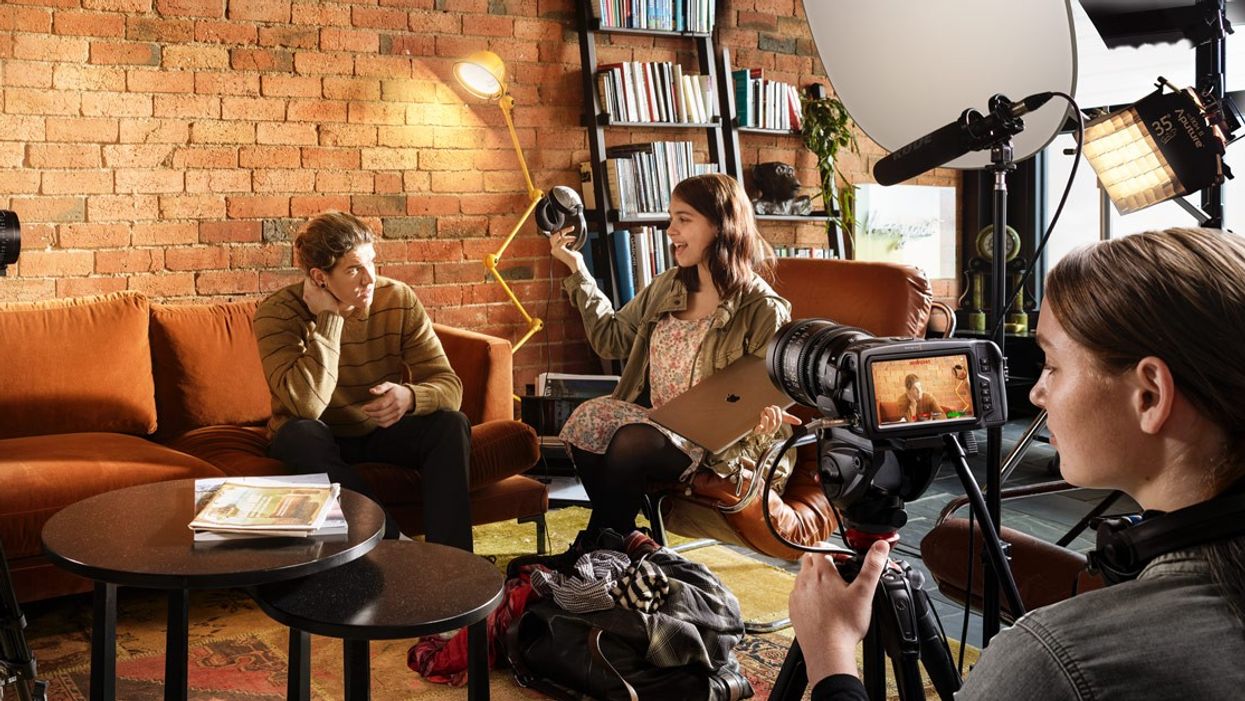Blackmagic Releases BMPCC 6K Footage (and It's Amazing)
With 12-Bit RAW with Dual Native ISO, the new BMPCC 6K offers a wide dynamic range.

Like everyone else last week, you may have been drooling over the notion of the Blackmagic Pocket Cinema Camera 6K shooting 12-bit RAW. But if something was causing you to wait on ordering this compact 6K camera, Blackmagic has dropped a series of test footage clips to eliminate all doubt.
With its compact size, the Blackmagic Pocket Cinema Camera 6K packs a huge punch thanks to a larger Super35mm image sensor and the ability to shoot using an EF mount lens without the need of a speed booster adapter. It can shoot in 12-bit color using Blackmagic Raw, and with dual ISO, it has the same impressive dynamic range as its younger brother, the Pocket Cinema Camera 4K. In fact, it's essentially the same camera with an upgraded image sensor and lens mount. But that extra sensor real estate boosts image resolution to 6K, making it the first pocket-sized 6K camera.
Blackmagic shot a variety of scenarios to give you an idea of how the BMPCC 6K performs in the wild, including an indie film, a music video, documentaries, and even wedding and real estate videos, all of which have a variety of lighting situations to take full advantage of the dual ISO capability. You can see them all on Blackmagic's website, but let's take a look at this mock indie film directed by Alice Stephens.
Blackmagic is marketing the BMPCC 6K as a versatile shooter that can prove its power in a myriad of different kinds of projects, thanks to its small form factor, high dynamic range, and, of course, that 6K resolution.
Creating cinematic virtual home tours: This is where the dual ISO can really let the camera's high dynamic range shine. It was shot using both Blackmagic extended video modes RAW Q0, and Q5 using a trio of Canon EF mount lenses. The variety of lighting conditions are handled very nicely with some solid details.
Documentaries: Shooting a documentary in the field can demand wide dynamic range to shoot in a variety of lighting scenes. The benefit is that just about everything a shooter could need, including a large 5" touchscreen with focus assist, is built-in. Note the variety of lighting challenges in the forest, that's what dual ISO buys you...dynamic range. And the detail of the bark on every tree or leaf is impressive. I'd bring extra batteries, though.
Weddings: With a Super 35mm image sensor, wedding videographers can make a couple's happy day even more dramatic with a cinematic flair, and do it while recording to an external drive for those long moments you don't want to miss swapping out memory cards.
Music Videos: For this clip, filmmaker Hamish McGregor shot a music video at 8:1, which enabled him to know exactly how much storage he would need to get enough coverage for the 2 1/2 minute video. And thanks to shooting in 6K, filmmakers could get up to three different camera angles from a single take, making production time fast and affordable for struggling bands.
Indie Films: At under $3,000, the BMPCC 6K can be the ideal camera for shooting your low budget indie film while still giving it a big-budget look. The low cost, frees up room in the budget for higher-end cinema primes like the Atlas Orion 35mm and 80mm T2s, or the Sigma Cine zooms giving your low budget production even higher production value.
News and Sports Gathering: Shooting at a variety of frame rates, and with its handy dynamic range, it wouldn't surprise me if the BMPCC 6K becomes a popular ENG option for smaller TV studios and websites looking to add a big city feel to their reports.
Blackmagic has also made the original camera files available for download, so users can play with color correction to test the grading capabilities. You can download the original camera files here.
It seems to me, that the only real competitor to the BMPCC 6K in this price point is from Panasonic and it's full-frame S1H. It's going to be interesting to watch these two go head-to-head.














